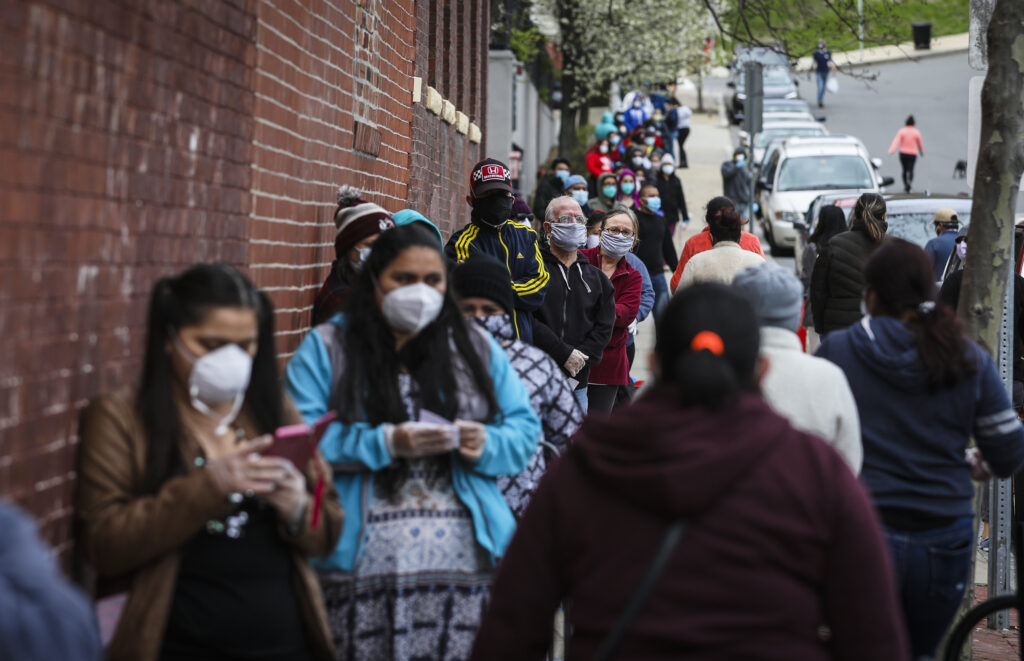Written by Sara Moscato Howe and Tym Rourke

Sara Moscato Howe
Health care systems have long known that health outcomes are heavily influenced by both individual abilities to access quality care and the ways in which environments either enhance or detract from overall health. Moving upstream to address inequity and social determinants to health has too often been elusive, largely because the financial structures that govern health care services delivery are limited in their structural ability to tackle these issues.

Tym Rorke
However, the COVID-19 pandemic has shifted the industry’s foundation and changed the public dialogue around how disease can have wide-reaching impacts across society as a whole. In response, government entities, philanthropy, payers, and investors unlocked capital across a wide range of intersecting issues, in an attempt to prevent social, economic, and public health collapse.
The pandemic continues to negatively impact communities and reveal where additional reform is needed. As such, we believe that 2022 will be a year of significant change – where the intersectionality between financing, health outcomes, social determinants, and equity will present opportunities to bring innovation into practice and revision core financial models. This year, we expect to see real movement in three key areas: new federal funding, continued march towards value-based payment, and state payment flexibilities. Further, we anticipate seeing over-arching efforts to better leverage public, private, and philanthropic resources towards better impact across the system.
Want more daily health intelligence from Third Horizon Strategies? Sign up for Tea Leaves – a free daily newsletter capturing a rundown of the most important health industry activity!
New Federal Funding for Mental Health and Addiction
The sudden, widespread incidence of COVID-19 forced U.S. appropriators to pilot new and innovative financing mechanisms to fend off or delay the worst economic and societal impacts of the pandemic. As new variants continue to evolve, upending any plans of a “return to normal,” we anticipate continued federal focus on flexible resources to ameliorate harms. Though the Build Back Better legislation is now in question, it is likely that the forthcoming federal budget process may be leveraged to bring forward some of the bill’s proposed investments, such as an extension of the childhood tax credit, reduction of prescription drug costs and closing the Medicaid coverage gap. Additionally, the current Continuing Resolution (CR) for this year’s budget expires February 18 – thus putting the federal budget back under the spotlight. The President’s proposed FY2022 budget recommended increases to both the Substance Use and Mental Health block grants, including a new set-aside focused on substance use disorder recovery services. These additional dollars, along with efforts to retain practice provisions that were authorized during the public health emergency (such as telehealth), will allow for more innovation and efforts to better meet patients where they are – improving engagement and retention in services.
Continued March Towards Value-Based Payment
As the pandemic continues to significantly impact our collective mental health, the behavioral health industry must move boldly towards models that properly finance the positive outcomes that are known to exist when quality, timely care is delivered. Our colleague Greg Williams recently published an article discussing the promise of shifting payment models away from fee-for-service to a financing scheme that shares risk and incentivizes positive outcomes. Such models align resources to service providers; fosters nimbleness and flexibility to quickly adapt to patient needs; and hold the promise of cost savings for payers, providers, and patients. CMS, state Medicaid authorities, and private payers are increasingly open to such payment reforms, and with existing models such as the Addiction Recovery Medical Home Alternative payment model (ARMH-APM).
State Payment Flexibilities
Workforce shortages have been well documented across the country and within the behavioral health care system. As states receive new federal dollars, they grapple with an under-staffed system to reach an increasing number of individuals in need. We predict that states will continue to employ flexibility when allocating resources, to balance sustaining critical resources with fostering innovations for long-term quality improvement post-pandemic (expanded telehealth, increased use of peers and certified workers to deliver services such as care coordination and case management, etc.).
We also anticipate significant attention around addressing the youth behavioral health crisis exacerbated by the pandemic, as our colleague Mindy Klowden wrote about last week. Providers, school districts, and states can look to the Medicaid to Schools program – which allows school districts to draw down Medicaid resources to support delivery of special education and certain health care services for students. Regulatory changes at the federal level provide broader opportunity for this resource to accelerate school district’s expansion of school-based health services, including behavioral health. The Healthy Students, Promising Futures project at the Trust for America’s Health is a great resource to assess state readiness to maximize this benefit, and to draw down tools and resources to ensure resourcing to expand these needed services.
Tying it all together: More aggressive calls for strategic leverage
Changes to the health care delivery system have too often focused on individual funding vectors in siloes – mistakenly thinking that innovations in one payment source can heal wounds on our health care system while improving our nation’s health outcomes. In reality – such narrow visioning has crippled innovation, stymied progress, and left much of the behavioral healthcare ecosystem under resourced, over regulated, and generally unable to respond to the global health needs of the people it desires to serve. As opportunities in the payer, state, and federal spaces bring more resources to the table, they must be integrated and leveraged against private investment, philanthropy, and community resources. Further, public financing tied to housing, transportation, childcare, and other support services must be understood and blended into the industry’s thinking to ensure prevention, treatment, and recovery supports consider the whole needs of the individual and their families.
While the pandemic has stretched America’s behavioral health system to the brink of collapse, we believe there is great opportunity to utilize this crisis as the catalyst for payment reform that will truly adapt to the patient’s needs – building out a revitalized behavioral healthcare ecosystem that can meet increased demands for care. The payers and providers willing to try new innovations will ultimately create the real winners of this system disruption: patients receiving the right level of care, at the right time adapted to their needs and location.

